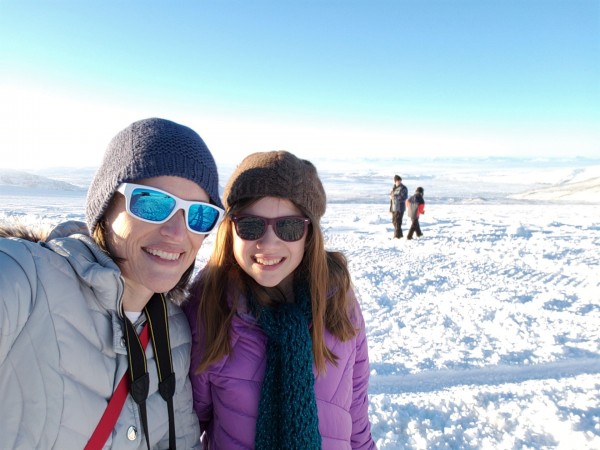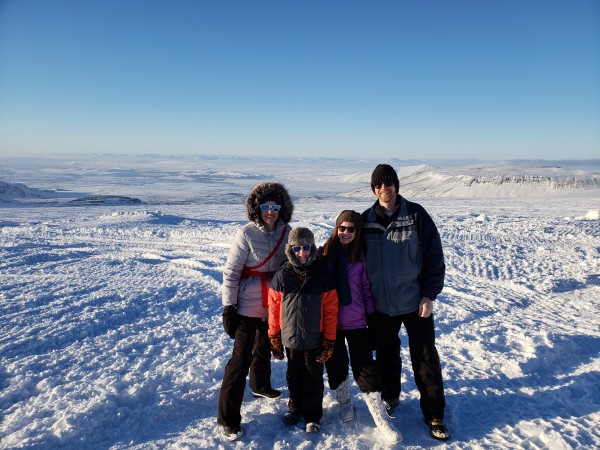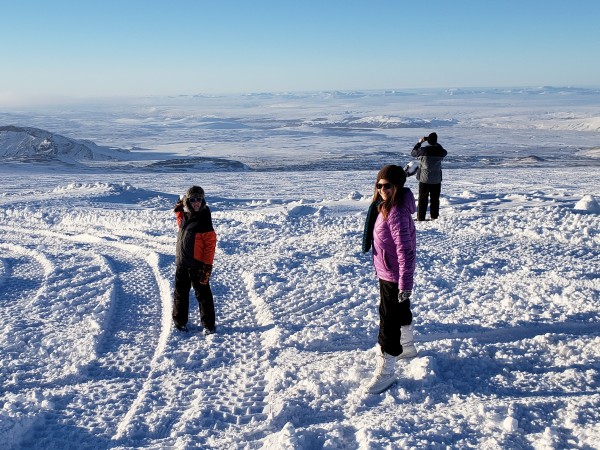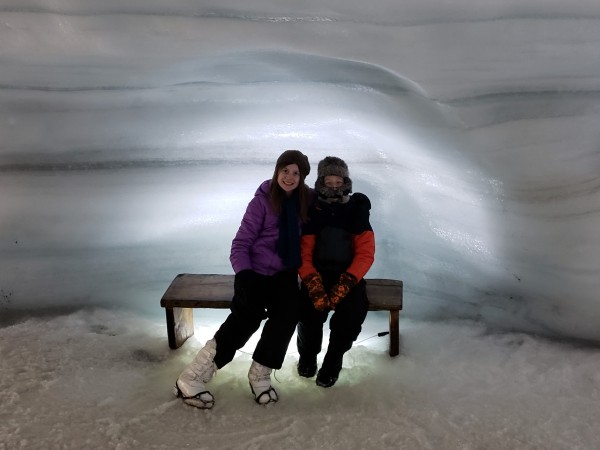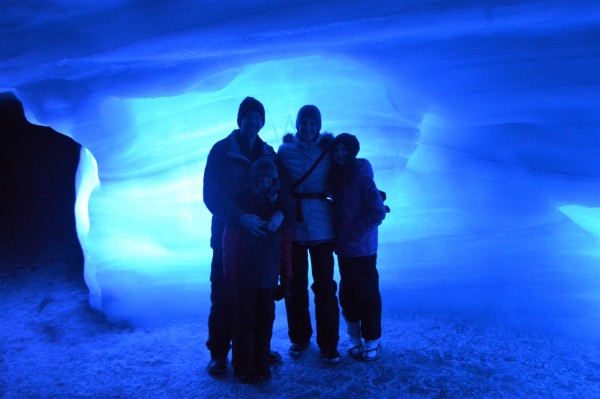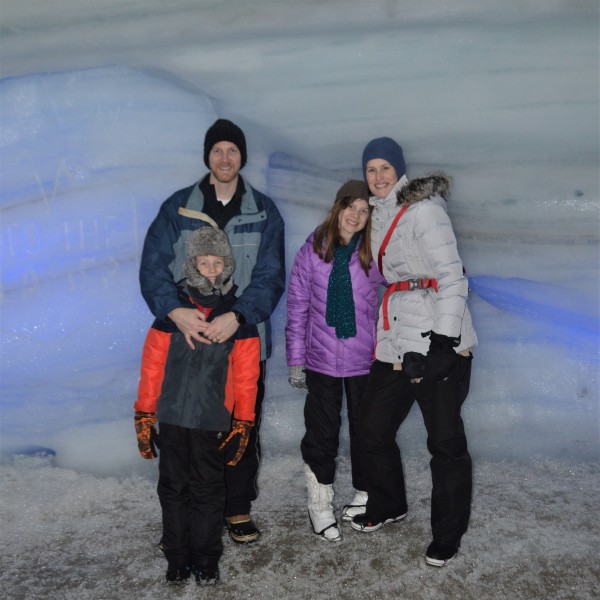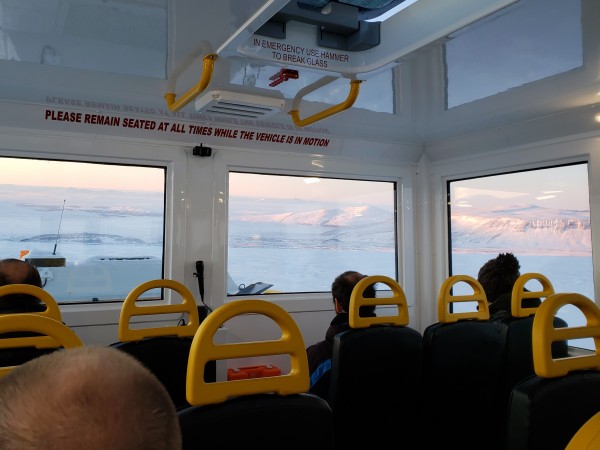On Wednesday, February 13, we packed up our tiny cabin and drove west to Húsafell, the starting point for our tour of Langjökull glacier. It was a beautiful day for driving.
We drove along Route 1, through the tunnel under Hvalfjörður fjord. The tunnel is 5,770 meters (3.5 miles) long and reaches a depth of 165 meters (541 feet) below sea level.

This is the sun at about noon, it just doesn’t get very high in the winter.
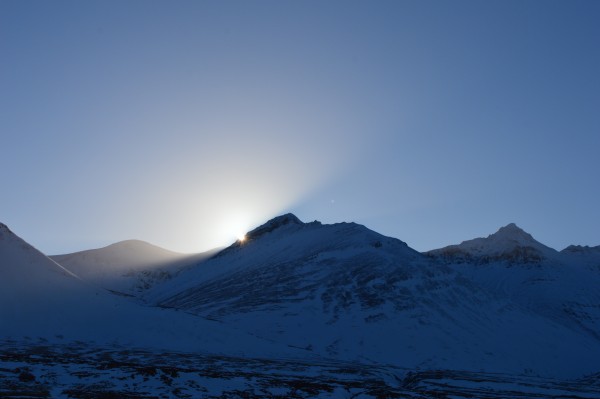
Upon arriving in Húsafell we boarded Ice5, a modified UN missile launcher, that would be our ride onto the glacier. It had a system to deflate its huge tires once we reached the edge of the glacier in order to give it more traction.

First, we stopped at Klaki Base Camp on the edge of the glacier. Langjökull glacier is the second largest in Iceland. It covers an area of about 950 km² (367 square miles) and most of it rises between 1200 and 1300 meters (around 4,000 feet) above sea level.
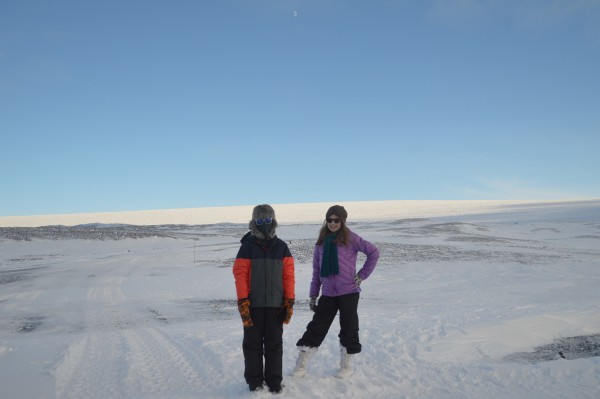
The southwestern part of the ice cap is called Geitlandsjökull, which rises to an elevation of 1400 metres. To the south of Geitlandsjökull and separated from the main ice cap, is the smaller (1350 m) Þórisjökull, which sits atop an irregular table mountain. According to legend, it was named after the troll Þórir, who lived in a green valley in the pass between the two glaciers.
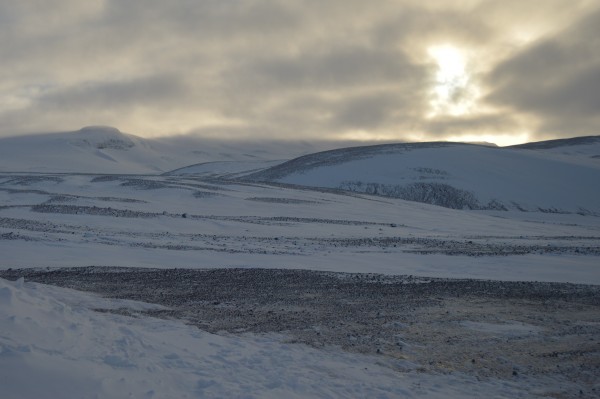
We re-boarded the Ice5 and drove onto the glacier.

The view from the glacier was incredible, the weather could not have been more perfect.

A team of scientists was gathering data nearby.
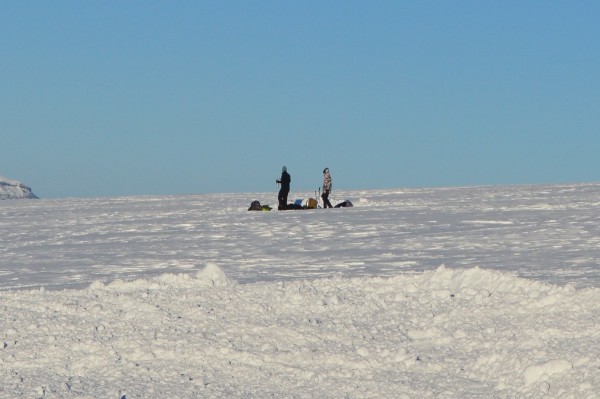
Once inside the tunnel, we put crampons on our boots so that we could travel the icy tunnels without slipping.
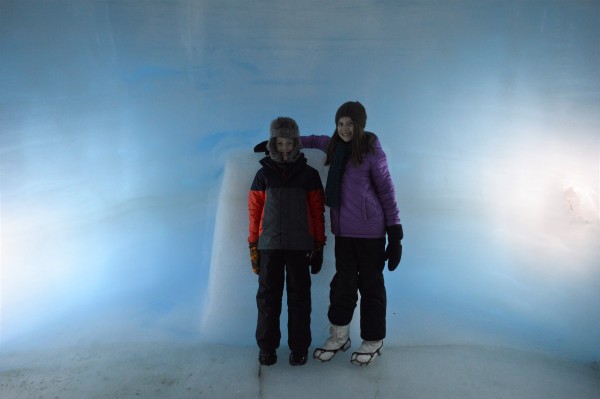
The lighting inside the glacier wasn’t great for photos, but this one shows the compact layers of the glacier, each representing a year in the glacier’s life. There was a particularly dark layer of dirt in the tunnel which we learned was the result of a volcanic eruption that year.
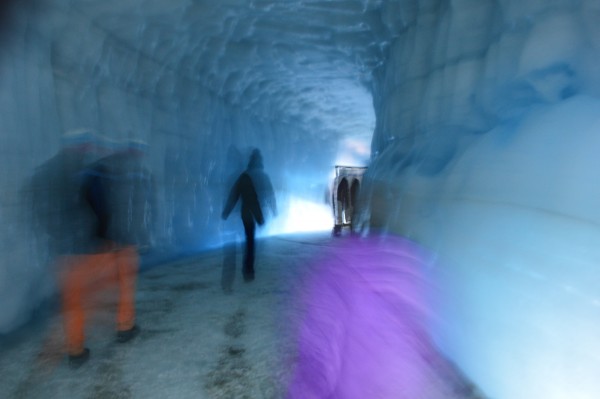
The temperature inside a glacier is a constant 32 degrees—meaning that ice doesn’t melt and water doesn’t freeze. The kids helped our guide demonstrate this at a particularly deep pond inside the glacier.
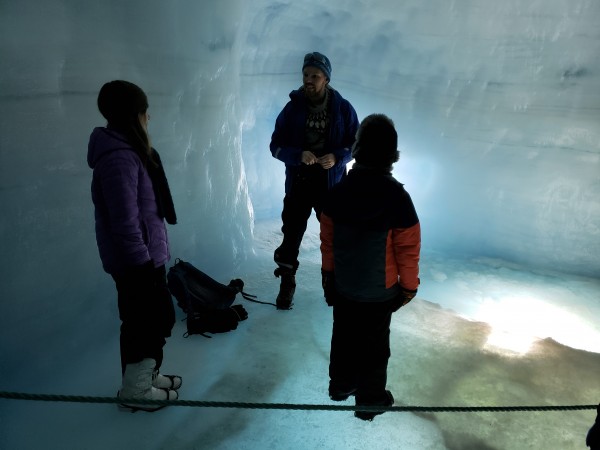
Here’s a video of their reward for helping… getting to throw large chunks of ice into the water!
There was a large crevasse in the glacier that we crossed by bridge and the crevasse was full of troll boogers, at least that’s what our guide told us it was.

We really wanted to go to Vatnajökull and hike the natural glacier caves made by summer runoff, but because we weren’t going to make it to that side of Iceland and because glacier cave hiking is more dangerous, we opted for this man-made glacier “cave” instead. I’m sure the natural ones are really incredible, but this one was a lot cooler that I thought it would be. We had a good time.
Here are a few photos from our drive back down the glacier.
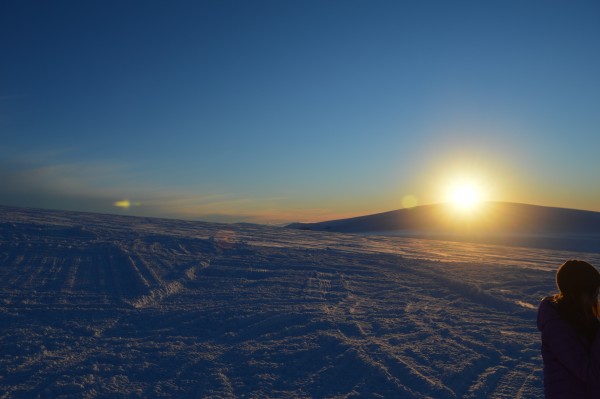
Once back in our own car, we found a restaurant for dinner and then drove to our hostel in Grundarfjörður on the Snæfellsnes peninsula.

